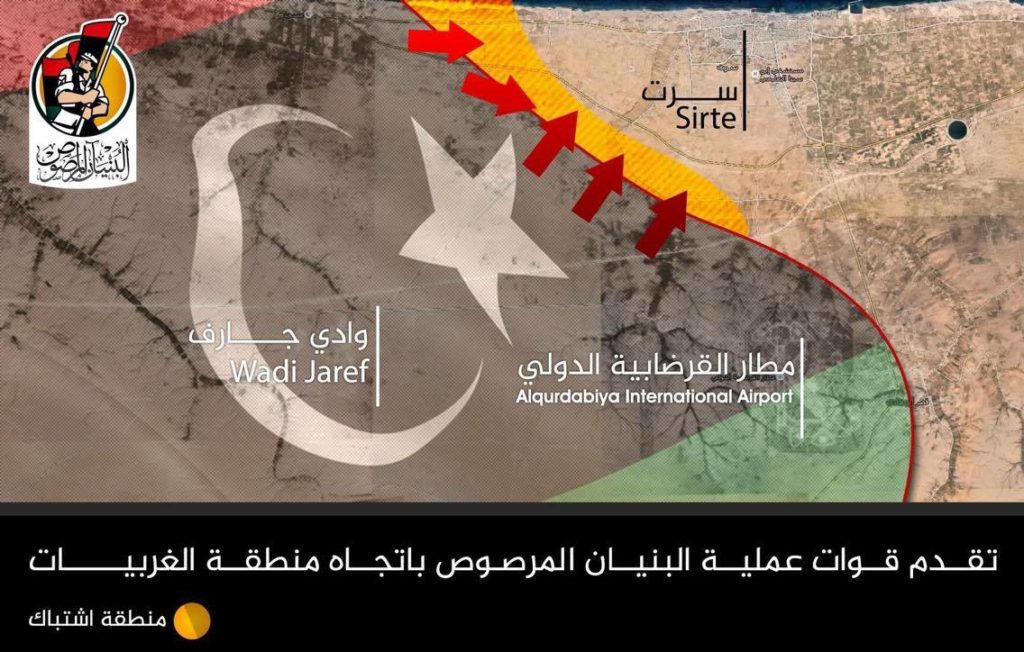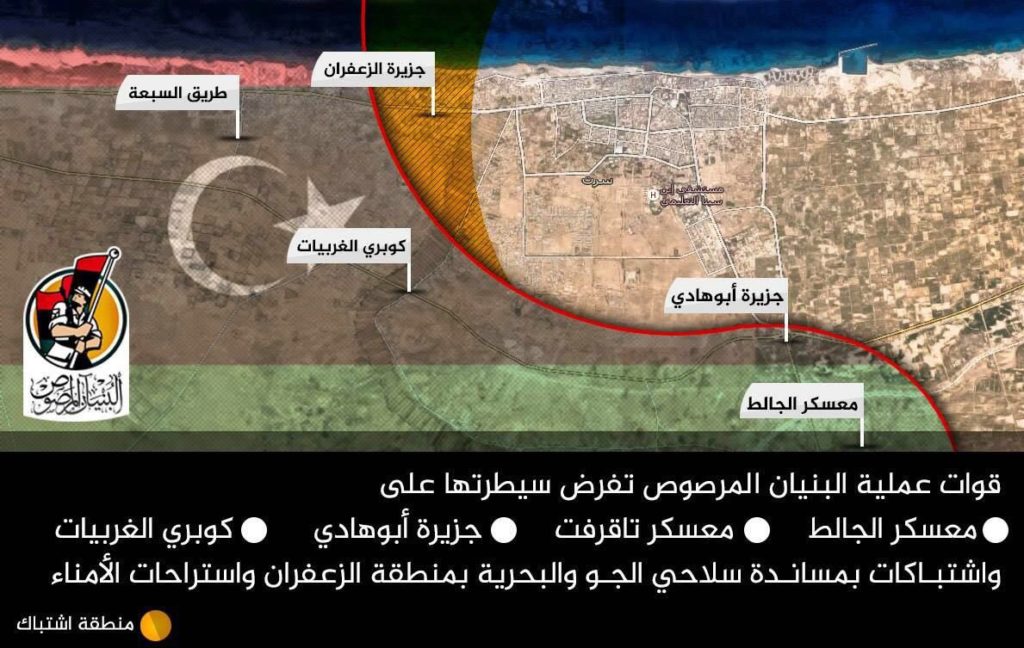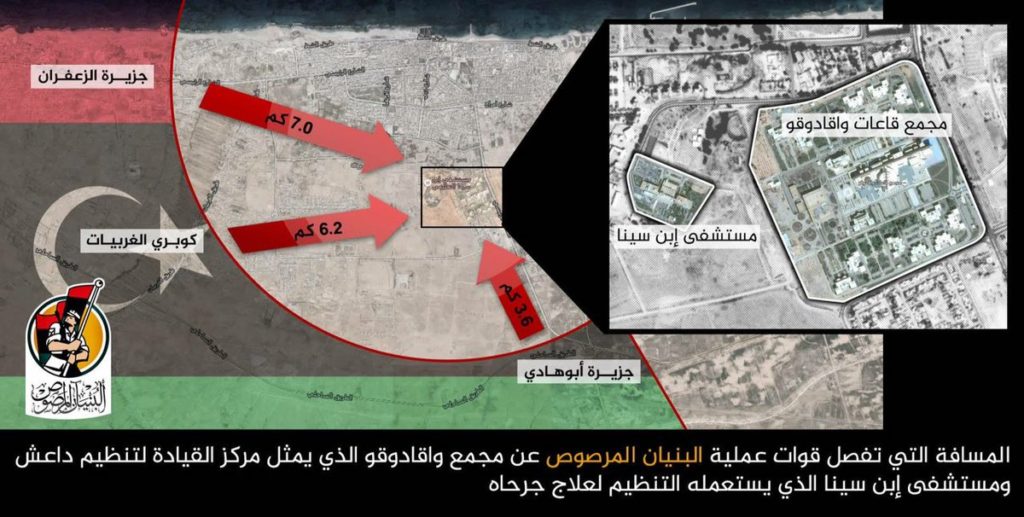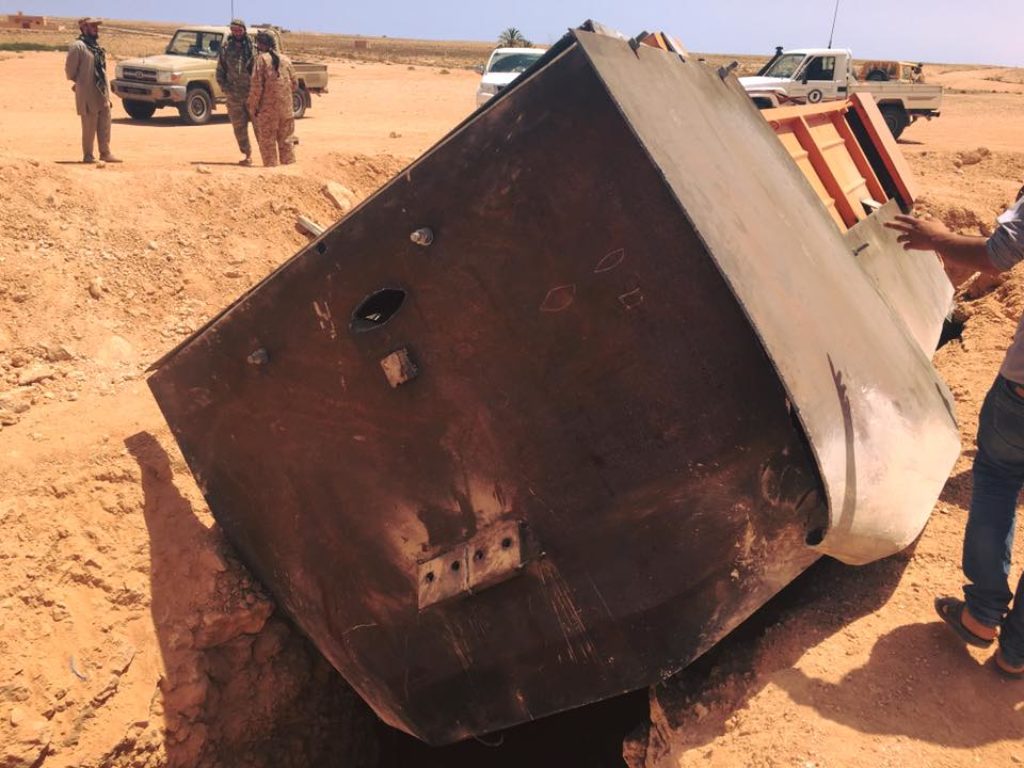The Islamic State is losing ground around its stronghold in Sirte, Libya. Forces aligned with the UN-backed interim Libyan government claim to have captured key points near the city in the last three weeks. And the so-called “caliphate’s” fighters have been forced to defend their positions against a multi-pronged assault.
The offensive is led by Al Bunyan Al Marsoos (“Solid Structure”) operations room, which draws fighters from militias based in Misrata and is allied with Libya’s Government of National Accord (GNA).
A spokesman for Al Bunyan Al Marsoos, Mohamed al Gasri, told the press earlier today that the operation’s men had entered Sirte and they could capture the city within days. “We think that Sirte will be liberated within days, not weeks,” Gasri claimed, according to Reuters. “The Daesh (Islamic State) snipers are a concern to us because they shoot from long distances and that has hindered us in the battle inside the city.”
However, the situation inside Sirte itself is murky.
Al Bunyan Al Marsoos has provided regular updates on the fighting via social media, producing infographics and maps that highlight its advances. Some of these can be seen below.
The Islamic State has sought to counter these claims, releasing videos from some of the locations that Al Bunyan Al Marsoos says it has overrun.
For instance, on June 4, Al Bunyan Al Marsoos said its men had captured the Qardabiyyah Airport south of Sirte. Amaq News Agency, a propaganda arm of the Islamic State, quickly produced a video purportedly showing the same airport free of any rival forces. Similarly, Al Bunyan Al Marsoos posted an infographic highlighting its gains at a location known as the Saadi Brigade headquarters. In short order, Amaq released another clip claiming the area was still supposedly under the Islamic State’s control.
Al Bunyan Al Marsoos has continued to produce photos and videos from the seized areas in the days since.
The Long War Journal cannot independently verify all of Al Bunyan Al Marsoos’ reported gains, but the anti-Islamic State operations room clearly has seized the initiative. And the Islamic State does not even attempt to deny all of its enemies’ successes.
In a telling move, Abu Bakr al Baghdadi’s loyalists have been forced to dispatch a large number of suicide bombers in an effort to stymie its adversaries’ advances.
According to Amaq, the Islamic State launched 10 “martyrdom operations” in Libya in May. Nine of the 10 were executed in and around Sirte. Interestingly, Amaq claimed only one suicide attack in Libya during the first four months of 2016. The Long War Journal assesses that the group is using its “martyrs” now because suicide bombings are one of the jihadists’ most effective tactics and its main base of operations could be lost. The Islamic State’s Libyan branch would not have launched nine “martyrdom operations” in May if its hold on the area was secure.
Amaq does not mention Al Bunyan Al Marsoos in its propaganda. Instead, the Islamic State’s mouthpiece claims the caliphate’s “martyrs” and other fighters have attacked Fajr Libya, an Islamist coalition that has strong roots in Misrata. This may be because Fajr Libya’s men have joined Al Bunyan Al Marsoos’ ranks.
In an update on June 8, Al Bunyan Al Marsoos reiterated its claim of control over the Qardabiyyah Airport, adding that its men had entered the city of Sirte itself and “made significant advance[s]…at all axises.”
If the military operations room continues to advance in Sirte, then it will be a major blow to the Islamic State’s aggressive expansion plans. The group pushed into Sirte in early 2015 and effectively controlled the city by June 2015. In the year since, the Islamic State has repeatedly showcased Sirte as one of its main bases outside of Iraq and Syria. Some have even speculated that the organization could move its leadership there.
Sirte is so important to the Islamic State that the group’s spokesman, Abu Muhammad al Adnani, mentioned it alongside Raqqa, Syria and Mosul, Iraq in a speech last month. Raqqa and Mosul are the de facto capitals of the “caliphate” and, as such, the most important cities under the jihadists’ control.
In his speech, titled “That They Live By Proof,” Adnani implicitly conceded that the Islamic State could lose one or all three of these cities. Adnani argued that neither the loss of individual leaders, nor the “loss of a city or the loss of land,” would mean that the Islamic State has been defeated as long as the jihadist retained the will to fight.
Al Bunyan Al Marsoos is not the only enemy the Islamic State faces in Sirte.
On May 31, Reuters reported that Libya’s Petroleum Facilities Guard (PFG) had taken control of Nawfiliyah and Bin Jawad. Both of the towns are less than 100 miles from Sirte.
Within the past year, the Islamic State’s Libyan arm promoted its control over these two locations, which are strategically situated along the Mediterranean coast.
In January, the jihadists announced their presence in Bin Jawad as part of an offensive named after their former emir for Libya. The group subsequently released videos and images advertising their complete control over the town. But on June 4, Al Wasat tweeted pictures from Bin Jawad, demonstrating that life was returning to the town after the Islamic State had been ejected.
The Islamic State paraded a convoy through Nawfiliyah and claimed control of the town in Feb. 2015. But the group hasn’t held any parades in Sirte or the neighboring towns in recent weeks.
Infographics (with maps) and other images released by Al Bunyan Al Marsoos
After capturing Qardabiyyah Airport, which is south of Sirte, Al Bunyan Al Marsoos pushed its way into the city:

A map of the offensive that was tweeted on June 8:

A map showing important locations inside Sirte, including Ibn Sina Hospital, which was terrorized by the Islamic State’s men in 2015:

An Islamic State VBIED that was disabled after being ambushed:








